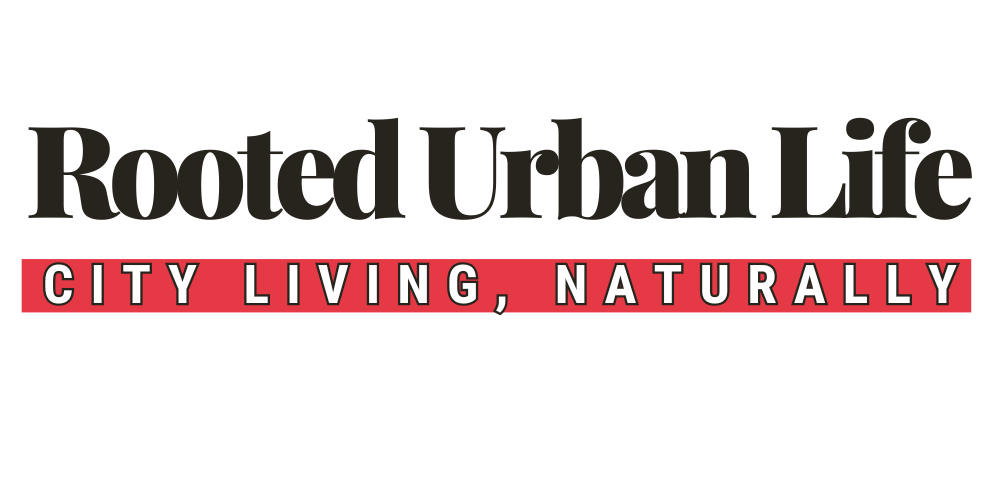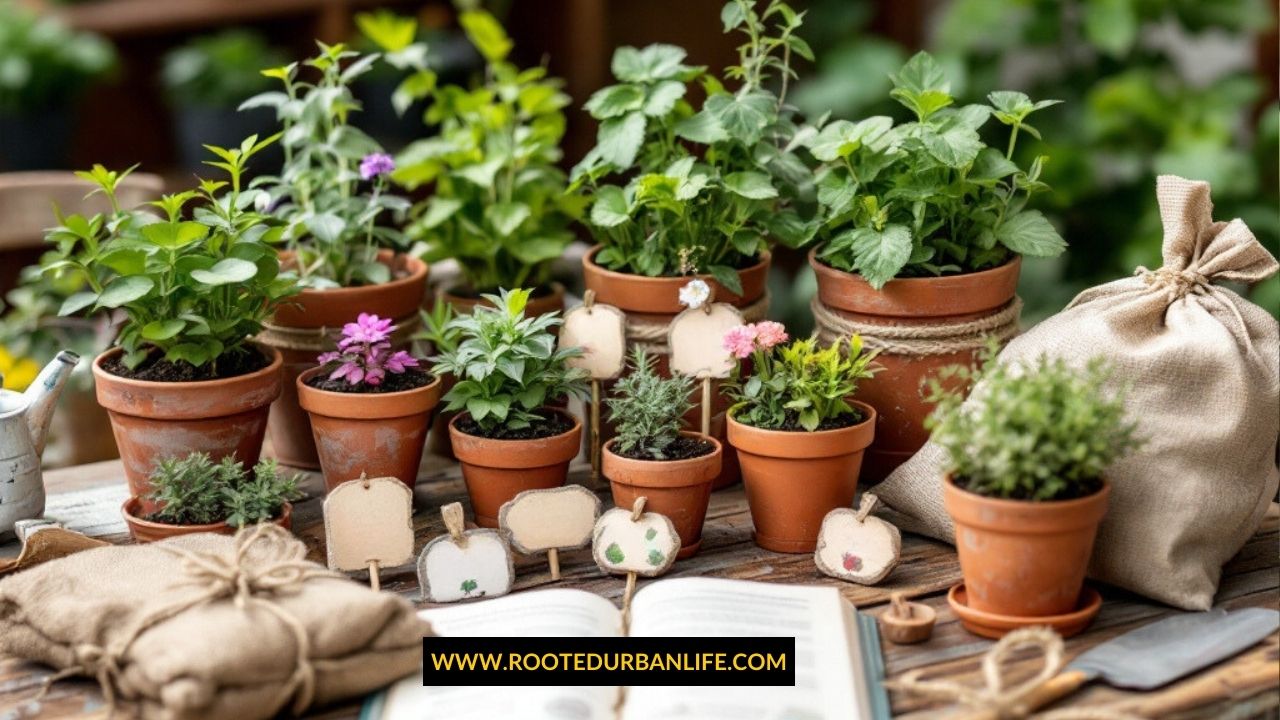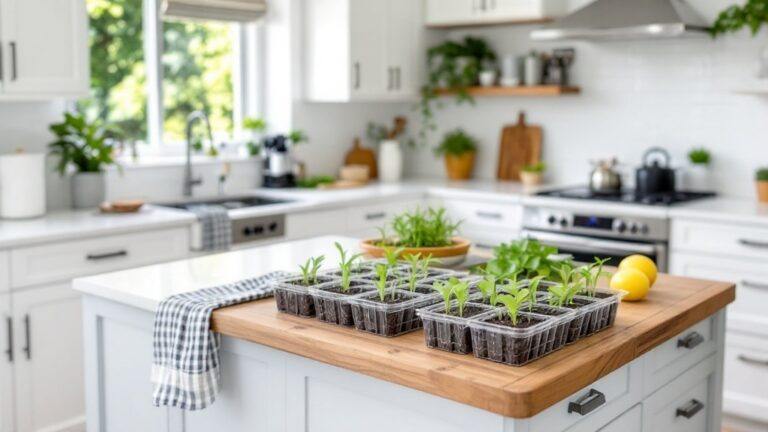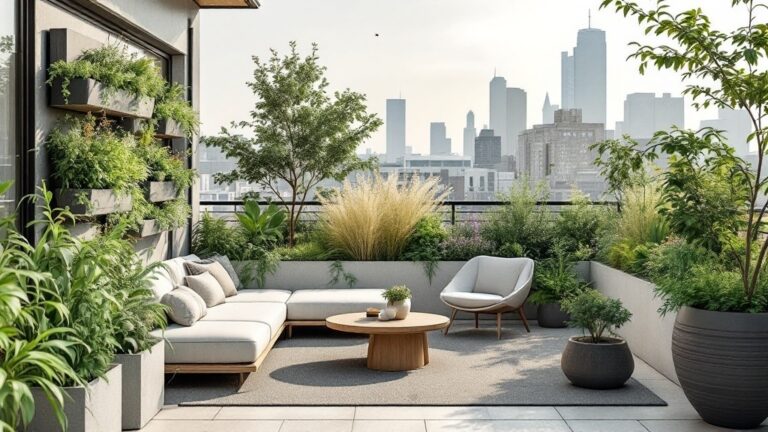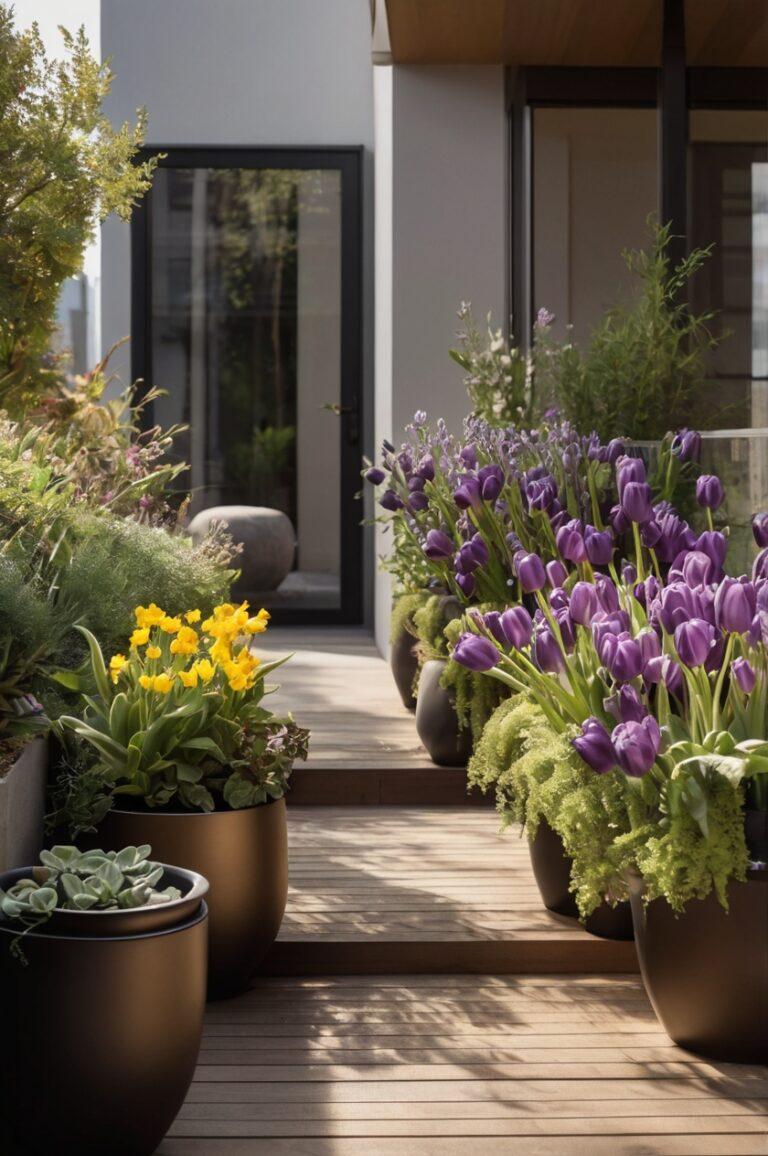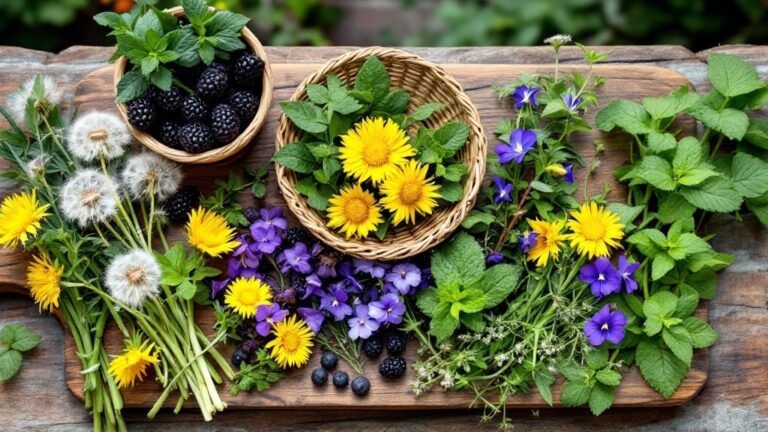Best Balcony Garden Kits For Beginners
Balcony gardening is a delightful way to enjoy fresh produce at home. Even with limited space, the right balcony garden kits can help you grow herbs and vegetables successfully. Choosing the best balcony garden kits for beginners ensures that your green space is easy to set up and maintain.

These kits come with everything you need, so you don’t have to guess what to buy. From pots to soil and seeds, they provide a complete solution to kick-start your gardening journey.
You can cultivate delicious herbs like basil and mint or even grow your favorite vegetables. With the right balcony garden kit, growing your own food is not only rewarding but also enjoyable. Whether you’re looking to enhance your meals or create a more inviting space, balcony gardening is a perfect choice.
Balcony gardening is an easy and rewarding way to grow fresh herbs and vegetables, even in limited space. With the right garden kits, containers, and plant choices, you can create a thriving green space on your balcony. This guide covers the best kits for beginners, key plant options, space-saving tips, and essential care techniques to help you get started and enjoy a productive balcony garden.
Choosing the Right Garden Kit
Selecting the right garden kit is crucial for success. Consider the size of your balcony, the sunlight it receives, and the types of plants you want to grow. These factors will guide you toward the kit that suits your needs best.
Top Balcony Garden Kits for Beginners
To help you start your balcony garden, here are some highly-rated kits with detailed pros and cons to guide your decision:
Back to the Roots Kitchen Herb Garden
- What It Offers: Includes organic soil, seeds (basil, mint, and cilantro), and biodegradable grow pots.
- Pros:
- Beginner-friendly with clear instructions.
- Certified organic materials and non-GMO seeds.
- Compact and perfect for small balconies.
- Cons:
- Limited to herbs only—less variety for those wanting vegetables or flowers.
- Pots may need upgrading as plants grow.
Mr. Stacky 5-Tier Vertical Garden Planter
- What It Offers: A space-saving vertical planter system for up to 20 plants, suitable for herbs, strawberries, or flowers.
- Pros:
- Maximizes growing space on small balconies.
- Durable, lightweight, and easy to assemble.
- Ideal for creating a lush green wall.
- Cons:
- Does not include seeds, soil, or tools.
- May require additional watering systems for even moisture distribution.
- What It Offers: A 4×4-foot raised bed made of durable vinyl for vegetables, herbs, or flowers.
- Pros:
- Provides ample space for multiple plants.
- Sturdy and weather-resistant materials.
- Easy to assemble with no tools required.
- Cons:
- Requires more balcony space, making it less ideal for very small areas.
- Does not include soil, seeds, or other gardening essentials.
The Garden Republic Seed Starter Kit
- What It Offers: Includes seeds for four herbs (basil, parsley, cilantro, and chives), soil discs, pots, and markers.
- Pros:
- Compact and affordable starter kit.
- Excellent gift option with aesthetically pleasing packaging.
- Includes a detailed guide and customer support.
- Cons:
- Limited to herbs; not suitable for those wanting vegetables or flowers.
- May require repotting as plants grow.
AeroGarden Indoor Hydroponic Garden
- What It Offers: A hydroponic system with LED grow lights, a water reservoir, and pre-seeded pods (herbs included).
- Pros:
- Perfect for balconies with limited sunlight.
- Low-maintenance system with automatic watering and lighting.
- Produces faster growth compared to soil-based systems.
- Cons:
- Higher upfront cost compared to traditional kits.
- Limited to smaller plants like herbs or lettuce.
Setting Up Your Balcony Garden

Starting your balcony garden involves assembling your setup and selecting the right soil or growing medium. These steps are key to ensuring your plants thrive.
Assembly and Installation
Choose containers with drainage holes to prevent water logging and root rot. Self-watering pots are great for beginners, as they maintain soil moisture with minimal effort. Maximize space with vertical gardening solutions or hanging baskets, and position your containers where they’ll receive adequate sunlight and protection from strong winds.
Soil and Growing Medium
Use a potting mix that drains well but retains moisture. A blend of potting soil and organic compost works for most plants. Add organic fertilizer for herbs and vegetables to boost growth. Tailor your soil choice to specific plant needs—cacti require sandy soil, while leafy greens thrive in nutrient-rich mixes.
For specific plants, you might need unique mixes. For example, cacti need sandy soil, while leafy greens prefer a rich, organic base. Check plant requirements to choose the best growing medium for your balcony garden.
Plant Selection

Choosing the right plants ensures a thriving balcony garden. Focus on herbs, vegetables, and flowers suited to containers and your balcony’s conditions.
Choosing Plants for Your Kit
Consider sunlight and shade when selecting plants. Many vegetables and herbs need six hours of sunlight daily. Here are some options:
- Herbs: Basil, parsley, and mint are easy to grow and enhance meals.
- Vegetables: Cherry tomatoes, radishes, and lettuce thrive in containers and offer quick harvests.
- Fruits: Strawberries and dwarf citrus varieties, like lemons, grow well in pots and add beauty to your garden.
- Flowers: Marigolds and petunias provide color and attract beneficial insects.
Understanding Plant Needs
Each plant has specific requirements:
- Water: Keep soil consistently moist but not soggy. Check dryness before watering.
- Light: Match plants to your balcony’s sunlight levels.
- Soil: Use a mix designed for containers to support drainage and nutrients.
For balcony gardening, consider drought-resistant plants if you live in a hot area. They need less water and are easier to care for. Climbing plants like peas can save space, as they’ll grow upward on trellises.
Growing Your Garden
Caring for your balcony garden involves daily maintenance, proper watering, and pruning to promote growth.
Daily Maintenance
Inspect your plants for pests or diseases, remove yellowing leaves, and rotate pots for even sunlight exposure. If using self-watering pots, ensure the reservoir stays filled.
Watering and Feeding
Water plants based on soil dryness. Use organic fertilizer biweekly during the growing season, diluting it as instructed. For hydroponic systems, monitor nutrient and pH levels regularly.
Pruning and Harvesting
Prune to remove dead or overgrown parts, improving air circulation and growth. Harvest herbs and vegetables in the morning for peak freshness, leaving enough foliage for continued growth.
To make your balcony garden thrive, you can use various accessories and enhancements. These tools can help you manage your plants better and promote healthy growth. Focus on the essentials that fit your gardening style and space.
Accessories and Enhancements
Boost your balcony garden with helpful tools and advanced techniques.
Additional Tools and Accessories
- Grow Bags: Great for vegetables or flowers, offering good drainage and root aeration.
- Railing Baskets: Hang over balcony rails to save floor space and add greenery.
- Window Boxes: Expand your garden without occupying floor space.
- Plant Supports: Use stakes or cages for taller plants to prevent breakage.
Optimizing Growth with Grow Lights
Grow lights are essential for balconies with limited sunlight:
- LED Grow Lights: Energy-efficient and safe for close use.
- Full Spectrum Lights: Support various growth stages.
- Placement: Keep 12-24 inches above plants, adjusting as they grow.
Exploring Advanced Techniques
- Hydroponic Systems: Grow plants in water for efficiency and space-saving.
- Vertical Gardening: Use wall-mounted planters or trellises for upward growth.
- Companion Planting: Pair plants like basil and tomatoes to boost flavor and deter pests.
Using these accessories and techniques will help turn your balcony garden into a productive and beautiful space.
Common Pitfalls and Solutions
Avoid common gardening challenges by addressing pests, diseases, and overcrowding.
Dealing with Pests and Diseases
Inspect plants for aphids or yellowing leaves. Use insecticidal soap or neem oil to manage pests. Introduce beneficial insects like ladybugs for natural pest control.
Managing Overcrowding and Poor Growth
Overcrowding limits light and nutrients. Follow spacing guidelines, prune plants, and use vertical gardening techniques to optimize space.
Frequently Asked Questions
As you start your balcony garden, you may have some common questions. Below are important points to help you get started with the right tools, plants, and tips.
What essentials should I look for in a balcony garden kit as a beginner?
When choosing a balcony garden kit, look for items like planters, seeds, soil, and tools. Make sure the planters have drainage holes. A light-weight soil mix is important too.
How can I start a small garden on my apartment balcony?
To start a small garden, choose a sunny spot on your balcony. Select pots or containers that fit your space. You can plant seeds or small plants directly into the containers.
Which plants are recommended for someone new to balcony gardening?
For beginners, consider easy-to-grow plants like herbs, like basil or parsley. Other good choices are flowers such as marigolds and pansies. These plants are hardy and don’t require a lot of care.
Which vegetables thrive in a balcony garden environment?
Vegetables that do well in containers include cherry tomatoes, radishes, and lettuce. These grow quickly and can thrive in smaller spaces. They also do well with limited sunlight.
What considerations should I take into account when designing a garden for a small balcony?
Think about sunlight, wind, and space limitations. Ensure your plants can get enough light and are sheltered from strong winds. Use vertical space by hanging pots or shelves to maximize your area.
How do I choose the right soil mix for a balcony garden?
Select a soil mix designed for container gardening. This type is lighter and allows for good drainage. You may also add compost for added nutrients to support your plants.
Key Takeaways
Choose the Right Kit: Select a beginner-friendly garden kit that includes everything you need for easy setup.Maximize Space: Use vertical gardening, self-watering pots, and hanging baskets to make the most of limited space.Pick the Right Plants: Herbs like basil and mint, and vegetables like cherry tomatoes, thrive in small spaces and containers.Care for Your Plants: Regular watering, pruning, and pest checks are key to a healthy garden.Use Helpful Tools: Enhance growth with accessories like grow lights and window boxes, especially in low-light areas.
Balcony gardening offers fresh produce and a rewarding hobby. By choosing the right kit and plants, you can create a thriving garden even in small spaces. Pay attention to sunlight, watering, and plant care for the best results. Start your balcony garden today and enjoy the benefits of homegrown food and vibrant greenery. Don’t forget to let us know about your progress and signup to stay in touch.

